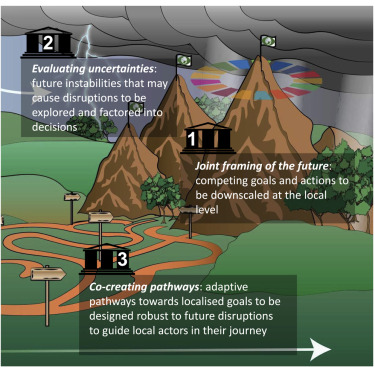Innovative technologies are playing a transformative role in driving environmental initiatives, enabling businesses, governments, and communities to address pressing environmental challenges and promote sustainability. Here are some cutting-edge technologies that are driving environmental initiatives forward:
1. Renewable Energy Technologies
- Solar Power: Advancements in solar photovoltaic (PV) technology, including improved efficiency, lower costs, and innovative designs such as building-integrated photovoltaics (BIPV), are making solar energy increasingly accessible and cost-effective for both residential and commercial applications.
- Wind Energy: Next-generation wind turbines, offshore wind farms, and advanced wind energy forecasting systems are expanding the potential for wind power generation, harnessing clean and abundant wind resources to produce electricity at scale.
- Hydropower Innovations: Innovative hydropower technologies, such as low-head turbines, run-of-river projects, and pumped storage hydroelectricity, are enhancing the efficiency, flexibility, and environmental sustainability of hydropower generation while minimizing ecological impacts.
2. Energy Storage Solutions
- Battery Technologies: Breakthroughs in battery chemistry, materials science, and manufacturing processes are driving advancements in lithium-ion batteries, solid-state batteries, and flow batteries, enabling grid-scale energy storage, electric vehicle adoption, and renewable energy integration.
- Hydrogen Energy: Hydrogen fuel cells and electrolysis technologies are emerging as promising energy storage and conversion solutions, offering zero-emission alternatives for transportation, industry, and power generation.
3. Smart Grid and Energy Management Systems
- Smart Grid Technologies: Smart grid innovations, such as advanced metering infrastructure (AMI), demand response systems, and grid-scale energy storage, are optimizing energy distribution, enhancing grid reliability, and enabling greater integration of renewable energy sources.
- Energy Management Platforms: AI-driven energy management platforms, IoT devices, and real-time analytics tools are empowering businesses and consumers to optimize energy usage, reduce costs, and lower carbon emissions through data-driven insights and automation.
4. Circular Economy Technologies
- Recycling Innovations: Advanced recycling technologies, such as chemical recycling, robotic sorting systems, and blockchain-enabled traceability solutions, are revolutionizing waste management processes, increasing recycling rates, and closing the loop on materials.
- Remanufacturing and Upcycling: Remanufacturing techniques and upcycling innovations are extending product lifecycles, reducing resource consumption, and diverting waste from landfills by transforming discarded materials into valuable new products.
5. Precision Agriculture and Sustainable Farming Technologies
- Precision Agriculture: IoT sensors, drones, and AI-powered analytics platforms are optimizing farm management practices, improving crop yields, and minimizing inputs such as water, fertilizers, and pesticides through precision agriculture techniques.
- Vertical Farming and Indoor Agriculture: Vertical farming systems, hydroponics, and aeroponics technologies are revolutionizing urban agriculture, enabling year-round food production, reducing land use, and conserving water resources in densely populated areas.
6. Carbon Capture and Storage (CCS) Technologies
- Direct Air Capture: Direct air capture (DAC) technologies, carbon capture and utilization (CCU) processes, and carbon capture and storage (CCS) facilities are removing carbon dioxide from the atmosphere and industrial emissions, mitigating greenhouse gas emissions and combating climate change.
7. Environmental Monitoring and Remote Sensing
- Satellite Imaging: High-resolution satellite imaging, remote sensing technologies, and geospatial analytics tools are enabling real-time monitoring of environmental changes, including deforestation, land use change, air and water quality, and biodiversity loss.
- Sensor Networks: IoT sensor networks, wearable devices, and environmental monitoring stations are collecting data on air pollution, water quality, noise levels, and other environmental parameters, providing insights for policy-making, urban planning, and public health interventions.
Conclusion
Innovative technologies are driving environmental initiatives forward by providing scalable, cost-effective solutions to address pressing environmental challenges, promote sustainability, and build a more resilient and equitable future. By harnessing the power of renewable energy, energy storage, circular economy principles, precision agriculture, carbon capture, and environmental monitoring technologies, businesses, governments, and communities can accelerate progress towards achieving environmental sustainability goals and safeguarding the planet for future generations. Through continued investment in research, development, and deployment of innovative environmental technologies, we can unlock new opportunities for sustainable growth, mitigate climate change impacts, and preserve the natural resources upon which life depends.



